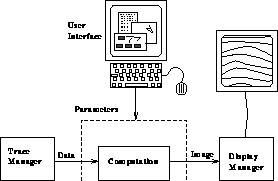
Figure 18.5: Imaging Tasks. The four principal divisions of the ISIS system are shown. The dotted lines represent software layers that insulate the computational processes from the other functions.





ISIS consists of four main parts (Figure 18.5): a parallel, on-line seismic trace manager, a high-performance parallel computational engine, a parallel graphics display manager, and a window-based, interactive user interface. The data from a seismic survey are stored across an array of trace manager processes. These processes are responsible for providing seismic traces to the computational processes at transfer rates sufficiently high to keep the computational processes from being idle. The computational processes generate an image and deliver it to the display manager for display on a monitor. The user triggers this processing sequence by adjusting an imaging parameter. The system is designed to minimize the delay between the user's action and the refreshing of the image-if the delay is short enough, the imaging will be truly interactive.

Figure 18.5: Imaging Tasks. The four principal divisions of the ISIS system are
shown. The dotted lines represent software layers that insulate the
computational processes from the other functions.
ISIS was designed to be a flexible, programmable imaging system. As described here, ISIS is actually two systems. The first is a set of system-level programs accessible through simple library interfaces. This software was designed to conceal implementation-specific details from the applications programmer. The trace manager and the display manager are part of the system-level software. The second level of ISIS, the applications level, is built upon the first. The user interface and seismic processing functions are part of the applications level. The system software was designed to minimize the effort needed to develop custom user interface and processing functions. We have developed both levels; the ISIS presented here is a processing system built upon the system software.
The advantages of the division between system and applications software are numerous: 1) the system is customizable, allowing for the addition of new imaging techniques or user interface technology; 2) the system will be portable with a minimal effort at the applications end-for instance, the application interface to the trace manager would be the same regardless of whether the platform was a message-passing multicomputer, a shared-memory multicomputer, a network of workstations, or a single uniprocessor machine; and 3) the parallelism of the trace manager and display manager are concealed from the applications programmer, greatly simplifying the programming effort.




